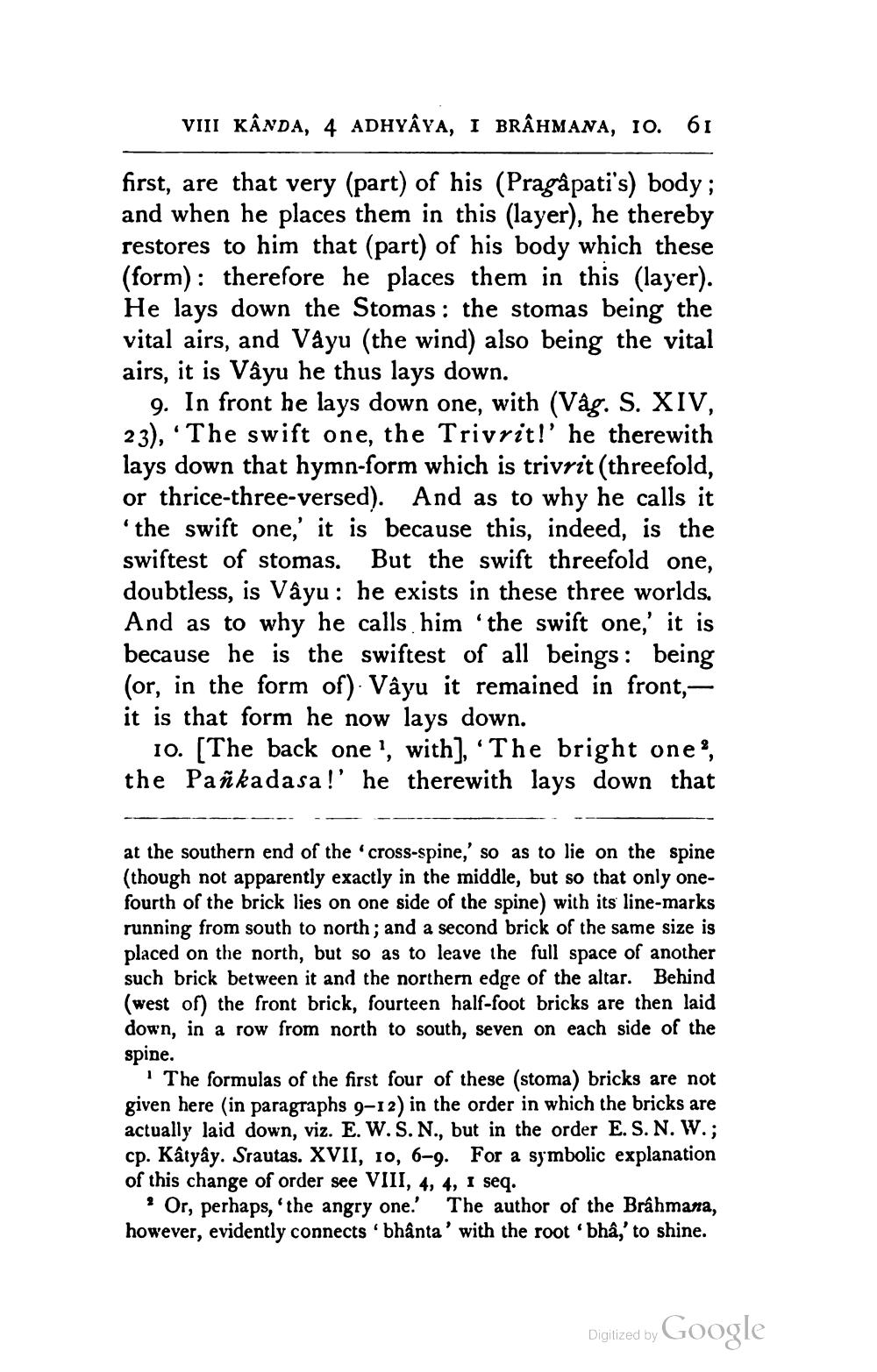________________
VIII KÂNDA,
ADHYAYA, I BRAHMANA, IO. 61
first, are that very (part) of his (Pragâpati's) body; and when he places them in this (layer), he thereby restores to him that (part) of his body which these (form): therefore he places them in this (layer). He lays down the Stomas: the stomas being the vital airs, and Vâyu (the wind) also being the vital airs, it is Vâyu he thus lays down.
9. In front he lays down one, with (Vâg. S. XIV, 23), 'The swift one, the Trivrit!' he therewith lays down that hymn-form which is trivrit (threefold, or thrice-three-versed). And as to why he calls it 'the swift one,' it is because this, indeed, is the swiftest of stomas. But the swift threefold one, doubtless, is Vâyu: he exists in these three worlds. And as to why he calls him 'the swift one,' it is because he is the swiftest of all beings: being (or, in the form of) Vâyu it remained in front,— it that form he now lays down.
10. [The back one', with], 'The bright one', the Pañkadasa!' he therewith lays down that
at the southern end of the 'cross-spine,' so as to lie on the spine (though not apparently exactly in the middle, but so that only onefourth of the brick lies on one side of the spine) with its line-marks running from south to north; and a second brick of the same size is placed on the north, but so as to leave the full space of another such brick between it and the northern edge of the altar. Behind (west of) the front brick, fourteen half-foot bricks are then laid down, in a row from north to south, seven on each side of the spine.
The formulas of the first four of these (stoma) bricks are not given here (in paragraphs 9-12) in the order in which the bricks are actually laid down, viz. E. W. S. N., but in the order E. S. N. W.; cp. Kâtyây. Srautas. XVII, 10, 6-9. For a symbolic explanation of this change of order see VIII, 4, 4, I seq.
Or, perhaps, 'the angry one.' The author of the Brahmana, however, evidently connects 'bhânta' with the root 'bhâ,' to shine.
Digitized by
Google




